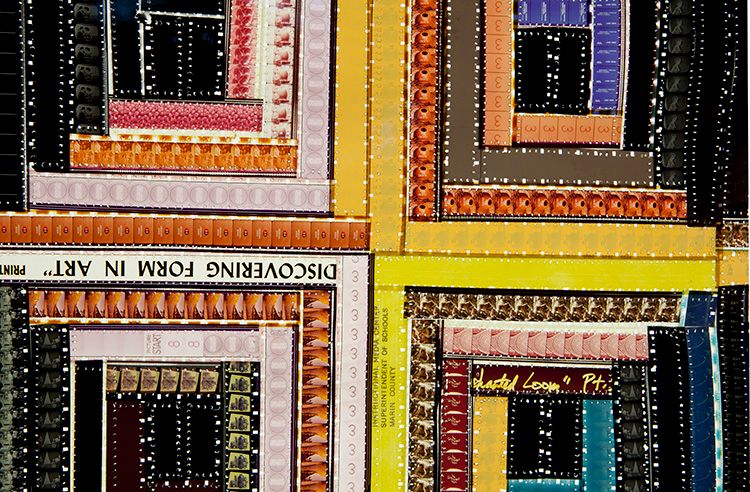Remediating the Archive: Sabrina Gschwandtner’s Film Quilts as Forms of Material Knowledge
Main Article Content
Abstract
This article argues that the quilting works of Sabrina Gschwandtner, which sew archival 16 mm film strips into complex and colourful visual patterns, offer an understanding of film archives as embodied sites of historical, gendered, knowledge. As cinematic objects, Gschwandtner’s film quilts veer from and expand the conception of cinema as a projected medium, while the artisanal labour of sewing spatializes the process of editing, “lending [it] a concreteness” (Walley 2020, 327). The quilts, I argue, embody a form of archiveology, drawing on “archival material to produce knowledge about how history has been represented and how representations […] are actually historical in themselves and have anthropological value” (Russell 2018, 22). The historical knowledge of these objects is no longer transmitted didactically and orally (as in the found footage documentaries she uses), but rather through the very materiality of the quilting process. Gschwandtner’s artisanal work mirrors the gendered labour of film editors, while reflecting on the historical significance of quilts as carriers of information transmitted in gendered and racialised circles. I contend that the film quilts are sensory vectors of archival knowledge. While offering crucial considerations on the disregard of American institutions (and archives) towards feminized artisanal labour, Gschwandtner’s work also remediates these archival materials, calling attention to their deterioration as slowly decaying, sensory objects. This remediation allows me to consider archives as sites of sensorial interactions and constantly evolving historical and embodied knowledge.
Article Details

This work is licensed under a Creative Commons Attribution 4.0 International License.
Authors who publish with this journal agree to the following terms:
- Authors retain copyright and grant the journal right of first publication with the work simultaneously licensed under a Creative Commons Attribution License that allows others to share the work with an acknowledgement of the work's authorship and initial publication in this journal.
- Authors are able to enter into separate, additional contractual arrangements for the non-exclusive distribution of the journal's published version of the work (e.g., post it to an institutional repository or publish it in a book), with an acknowledgement of its initial publication in this journal.
- Authors are permitted and encouraged to post their work online (e.g., in institutional repositories or on their website) prior to and during the submission process, as it can lead to productive exchanges, as well as earlier and greater citation of published work (See The Effect of Open Access).

